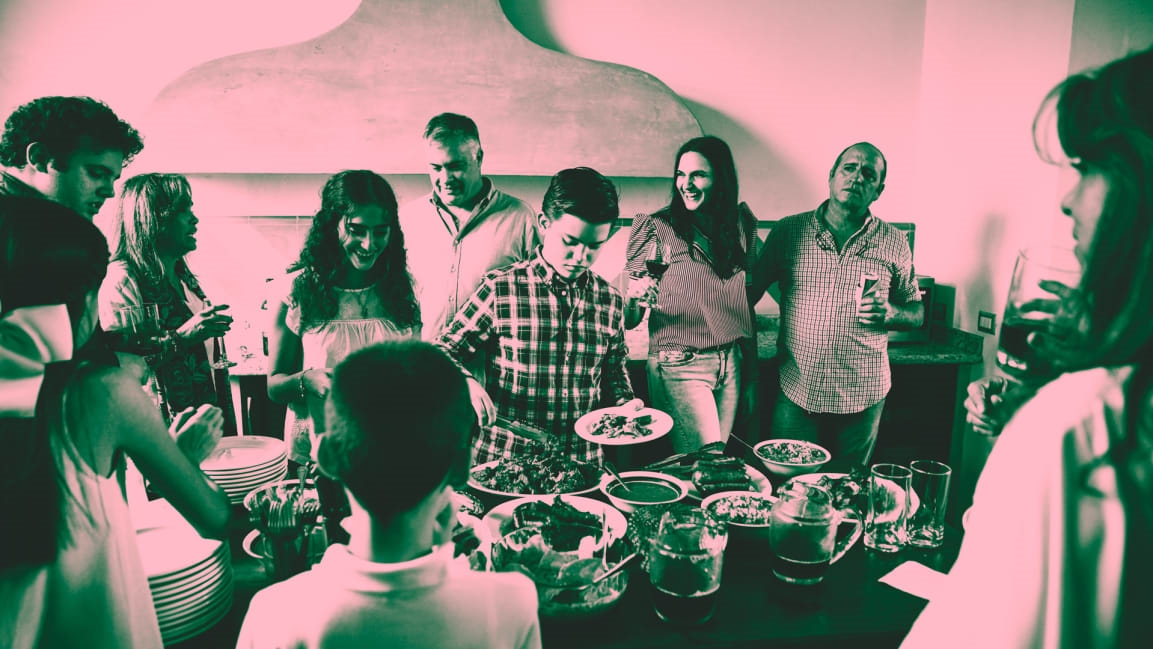8 ways to better navigate the holidays as a blended family
By Peg Conway
We’ve been bombarded by signs of the holiday season since early November. Turkeys, menorahs, and now, Santa and Christmas tunes in every store and on every radio station. If you’re like me, and from a blended family, the seasonal trappings can add a whole new level of stress. Whether they are formed after a death or divorce, blended families create a widening web of extended family relationships to be considered at celebration times, magnifying the complexities they experience all year round.
According to the Pew Research Center, in 40% of U.S. families, at least one partner has a child from a previous relationship, far different from the mid-1970s when my widowed dad married my stepmother. At that time, most children lived with two parents who were in their first marriage, and my only prior exposure to a blended family was the TV series The Brady Bunch. Widower Mike, the father of three boys, married the mother of three girls, Carol. We only find out in a post-series Brady movie, that Carol’s husband had also died. Their past marriages are never really discussed in the series and no grandparents seem to exist.
After my dad’s remarriage, we followed a similar pattern, leaving the past behind to create a new future, resulting in diminished contact with my maternal relatives. My memoir, The Art of Reassembly, recounts how, much later, I understood the detriments of this approach. It’s healthier, I learned, to acknowledge the realities of being a blended family, even if they’re challenging. Candor is especially important at the holidays when ordinary stresses may be amplified. Here are some ideas for embracing the complexity:
Soften Your Expectations
Releasing expectations of how the celebrations should go will foster the most helpful mindset. Expectations are insidious. They creep in under the radar of our awareness, forming sharp edges around our emotions. Then they poke others when they are not met. In advance of the holiday season and continuing as it unfolds, check in with yourself about expectations you are holding and try to let them go.
Initiate Communication
Ask everyone to weigh in on how to celebrate. Gaining insight into what the others in your blended family desire from the holiday season might help with releasing expectations. Maybe your children or stepchildren don’t really care as much about the things you thought were sacrosanct. Maybe they will have suggestions of how to balance time with all their different families that you hadn’t considered.
Put the Kids First
Inviting input about holiday celebrations from all the children involved in your blended family centers them in a way that matters, but you must follow it up by prioritizing their preferences, even (or especially) if they conflict with yours. This doesn’t mean indulging their every whim. Just let them know you’re listening. Children usually have little or no say in big decisions like divorce and remarriage that majorly impact them. Allowing them choice when you can will build trust.
Include Yourself Too
Putting the kids first also doesn’t mean ignoring adult needs altogether. The holiday season is plenty long, so make time in the calendar for something that sparks joy or brings you peace or connects you to your own history and traditions. As you nurture yourself, you’re also providing a healthy model for your children and stepchildren to witness.
Make Space for Emotions
Loss and change are inherent to any blended family, whether from a death or the end of a marriage. As with any loss, feelings of grief are likely to recur around holiday times, which serve as annual reminders of how things used to be. Accept that painful emotions occur. They may appear as angry outbursts or cold silence or sudden weepiness over something seemingly unrelated. Noticing and naming feelings allows them to flow through rather than escalate.
Schedule Downtime
Emotions are more likely to crescendo when people are run ragged. Allow space in the calendar for downtime and rest.
Create New Memories
While spending time with all branches of the blended family is important, so is creating new memories as a unit. They can be very simple, such as serving a special food or a gathering for a movie night or taking a walk together. New traditions may also emerge organically over time.
Keep Communicating
After the holidays have passed, continue the communication. Ask everyone what they enjoyed, what they thought worked well, what was hard, and invite their input about future celebrations. Bring up the conversation at different times of year. It may be easier to discuss new ideas when the holidays are not immediately proximate.
Author Peg Conway practices Healing Touch energy therapy in Cincinnati, OH, where she also volunteers at a children’s grief center. She writes often about early mother loss and long-term grieving. Her first book, The Art of Reassembly: A Memoir of Early Mother Loss and Aftergrief, is out now.
Fast Company , Read Full Story
(21)



